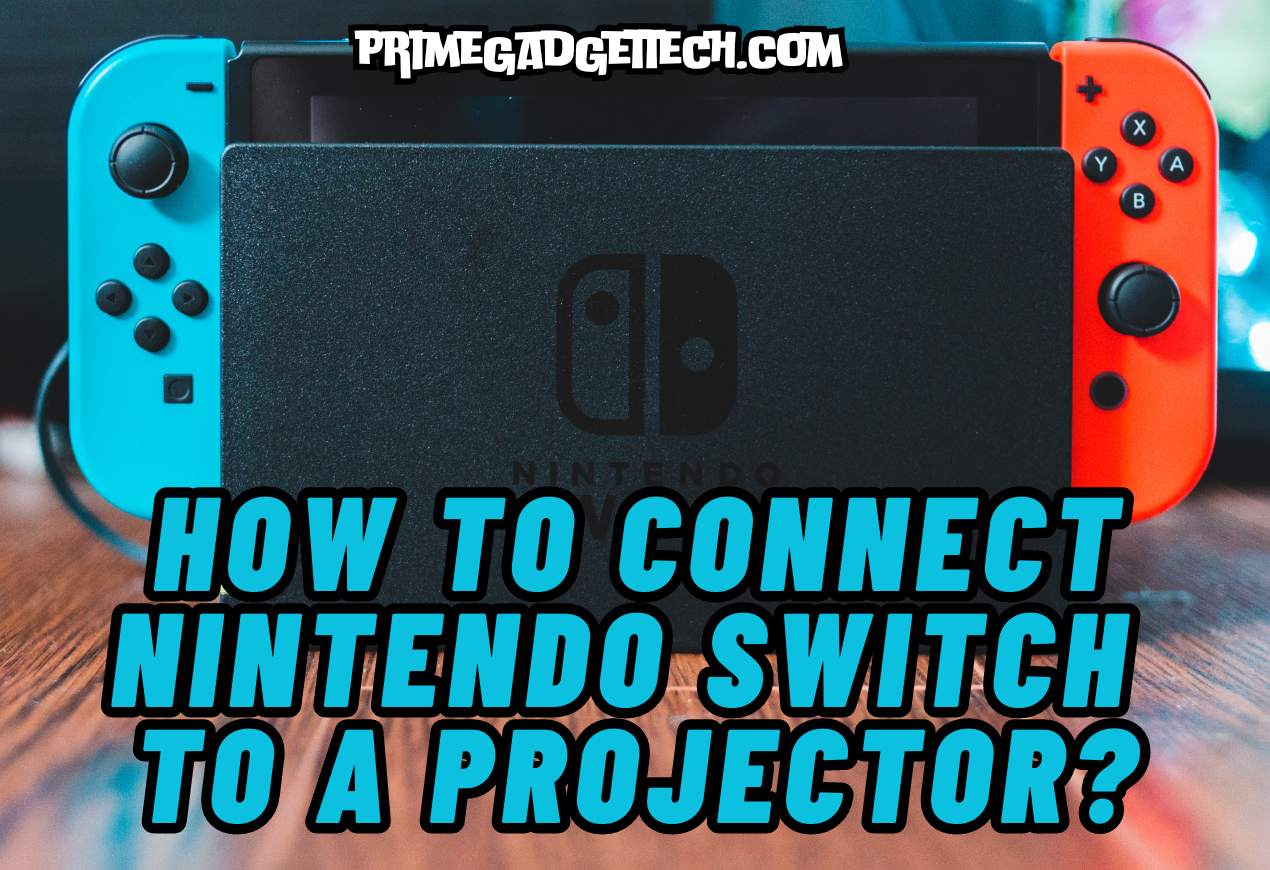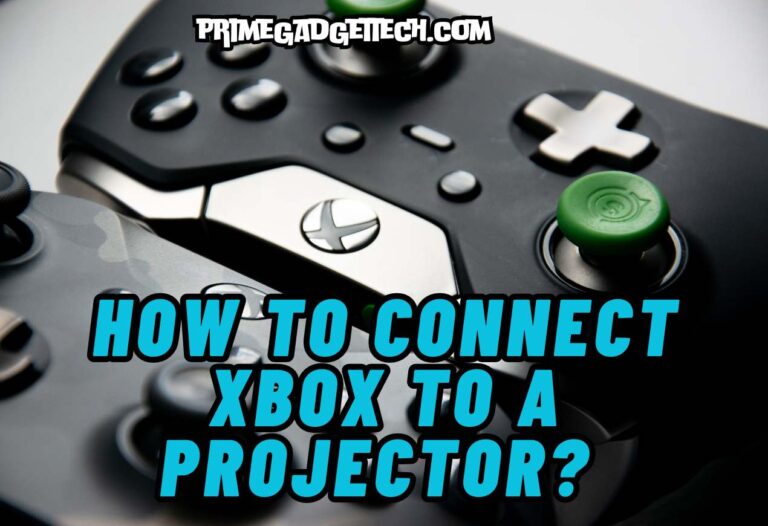How to Connect Nintendo Switch to a Projector?
Nintendo Switch stands out from the competitors due to its global nature between the gaming device and handheld gameplay. That being the case, perhaps you’d prefer a combined gaming performance that supports both mobile and large-screen play.
If you had the good fortune to come across Switches, you would surely be looking for ways to link a Nintendo switch to one of a projector. Are you interested in learning how to connect Nintendo Switch to a projector”? To learn more, keep reading.
Can a Nintendo Switch be Connected to a Projector?
You can use any accessible display medium to use your Nintendo Switch. Everything should be based on how connected the gadget is. The appropriate connections on your video game system allow you to connect it to external devices like your projector.
Nintendo Switches are compatible with a variety of projectors. Thus, if you already have one, the remainder should be simple. There are three HDMI-compliant versions of the Nintendo Switch that are readily accessible.
Projector connections have thus never been simpler. You shouldn’t be concerned if the ports on both gadgets don’t match perfectly. The connection gap can be filled by using an appropriate adaptor.
Related: How to Connect Xbox to a Projector?
How to Connect Nintendo Switch to Projector?
Similar to how it connects to a Television, a Nintendo Switch may be used with a projector.
Step 1: Take off the back cover of the Nintendo Switch dock.
Step 2: Attach the USB cable with the “AC ADAPTER” tag that comes with the Nintendo Switch AC adapter to the dock’s upper terminal. Then, insert the opposing end of the adaptor into a socket.
Step 3: Attach the HDMI port here to the “HDMI OUT” connection located now at the port’s bottom. The leading edge of the HDMI cable should be connected to the HDMI port here on projectors.
Step 4: Snap the Switch dock’s rear cover shut and insert your console.
Step 5: Make sure the game’s LCD display is facing the dock’s main panel once you connect it.
Everything you need to be doing to play your game is switch on any projection or screen.
How Do I Connect a Switch to a Projector Without a Dock?
Because the Nintendo Switch was one small gadget, it is probable that now the dock was misplaced or destroyed if you purchased it a long while ago. In this situation, you have the choice of purchasing the genuine Nintendo Dock or a third-party Dock. The Nintendo Switch console may, though, also be connected to a projector without the need for a dock.
- In lieu of a Dock, a Switch HDMI adaptor is required to create this link. A USB-C to HDMI adaptor should be bought.
- Verify that your Nintendo Switch device is powered and that the joy-con devices are connected to it.
- Attach the Switch HDMI adapter’s USB-C cable to the USB-C port here on the PlayStation gaming system. You have the option of using the original cords that came with your dock or investing in new ones.
- A USB-C wall connector should be connected here to the adapter’s USB-C charging connector.
- The projector as well as the Switch HDMI adaptor should be connected with an HDMI cable. The opposite end of the adaptor has this cable.
- To prevent the switch from lying flat, raise it. The valves that keep it from warming will be obstructed if it is allowed to lie flat.
- Choose the proper HDMI source, then verify the link. Your switch should be able to charge when connected in this manner!
Nintendo Switch Won’t Connect to Projector, Why?
When the Nintendo Switch won’t link to any projector, below are a few possible reasons why.
- The HDMI port used for the link must be in working order for the projector to get the Switch signals.
- It’s important confirming that the issue isn’t a bad HDMI port until you completely place the responsibility on your HDMI port.
- The issue might easily become that the projector is showing another of the HDMI ports instead of the single to which your switch is attached, as the majority of projectors offer several HDMI inputs.
- Whenever connecting any Nintendo Switch with any projector, some cables must be plugged in in a certain order. Your connection issues could be brought about by performing tasks out of sequence.
- The projector parameters on the Nintendo Switch can be modified. But, you can encounter difficulties attaching your switch when your projector isn’t set up properly.
- Nintendo recently recommended to Switch owners that they reset the power cable as a remedy.
- Should none of the aforementioned options resolve the issue, we advise getting in touch with Nintendo or the retailer where you bought your switch.
Related: Do Projectors Emit Blue Light?
No Sound on Switch After Connecting to Projector?
Software Error
An intrinsic fault in Nintendo Switch could cause problems.
When wearing headphones, the sound is muted
Mute when Headphones are Disconnected is an option for audio that can be activated within System Settings. This feature will silence the system’s loudspeakers when it is triggered.
Bluetooth Headphones are Paired With the Nintendo Switch
It’s likely that now the system is still sending sound through the Bluetooth headphones if you’re playing in remote control instead of via the speakers.
Hardware Failure
The equipment, including the console loudspeakers, can be harmed by accidentally hitting the console or by leaving the Nintendo Switch exposed to temperature, moisture, or dirt.
Can I Project My Nintendo Switch to My TV?
It could appear that the Nintendo Switch might also be connected wirelessly, given the variety of methods we can do it nowadays. The Nintendo Switch display cannot, however, be wirelessly cast from the console to a television.
To broadcast music and video remotely to a TV, you can utilize wireless HDMI equipment. The portable HDMI transmitter needs, however, to be powered. A USB C to HDMI converter can also be used to accomplish the same task.

Robert Will is an expert in wearable technology, with a keen focus on smartwatches and smart rings. Passionate about staying at the cutting edge of tech, Robert regularly acquires the latest wearable devices to thoroughly test and review. His in-depth guides are crafted to help consumers navigate the ever-evolving world of smart wearables, ensuring they make informed decisions. With a background in tech journalism and a genuine enthusiasm for innovation, Robert’s insights are both practical and engaging. Whether you’re a tech novice or a seasoned gadget enthusiast, Robert’s comprehensive articles and reviews offer valuable perspectives to enhance your tech experience.







